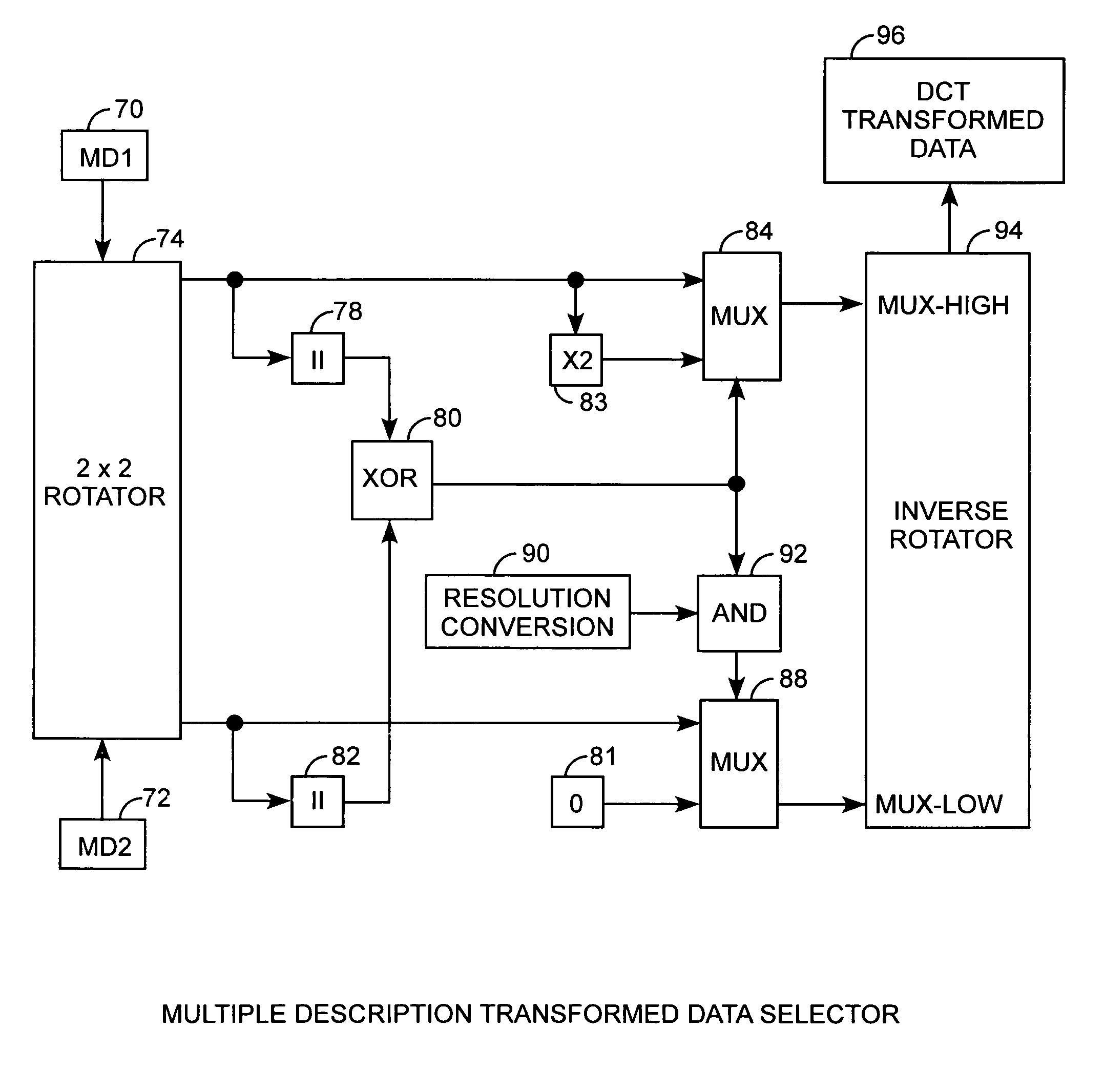Compressed data multiple description transmission and resolution conversion system
a transmission and resolution conversion system technology, applied in the field of discrete cosine transforms, can solve the problems of data loss, dct is not a true merge, and cannot enable one to directly merge two equal sized transforms into one double size transform,
- Summary
- Abstract
- Description
- Claims
- Application Information
AI Technical Summary
Benefits of technology
Problems solved by technology
Method used
Image
Examples
Embodiment Construction
[0021]An embodiment of the invention is described with reference to the figures using reference designations as shown in the figures. Referring to FIG. 1, an input set of eight integer samples from the DCT-II input buffer 10 is DCT-II transformed and quantized data. DCT data words two and eight are sent to processing unit PU1012, DCT data words three and seven are sent to processing unit PU1114, and DCT data words four and six to processing unit PU1216. The processing units, PU10, PU11, and PU12 are 2×2 lossless rotators. A 2×2 lossless rotator has two integer outputs for two integer inputs. A 2×2 rotator can be lossy or lossless. The first output is the first input weighted by the cosine of a rotating angle adding to the second input weighted by the sine of the same rotating angle. The second output is the first input weighted by the sine of the same rotating angle subtracted from the second input weighted by the cosine of the same rotating angle. The 2×2 lossless rotator comprises...
PUM
 Login to View More
Login to View More Abstract
Description
Claims
Application Information
 Login to View More
Login to View More - R&D
- Intellectual Property
- Life Sciences
- Materials
- Tech Scout
- Unparalleled Data Quality
- Higher Quality Content
- 60% Fewer Hallucinations
Browse by: Latest US Patents, China's latest patents, Technical Efficacy Thesaurus, Application Domain, Technology Topic, Popular Technical Reports.
© 2025 PatSnap. All rights reserved.Legal|Privacy policy|Modern Slavery Act Transparency Statement|Sitemap|About US| Contact US: help@patsnap.com



